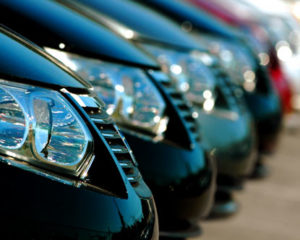Best traditional welding tables store UK
Best rated welding tables online shop UK: If you’re a professional fabricator, you’re well aware of the critical role welding table plays in your daily tasks. Today, we’re delving into the ins and outs of this essential tool – the welding table – to understand its significance in the world of welding. A welding table is more than a piece of furniture; It provides a dedicated workshop to perform the welding process effortlessly and greatly affects the quality of welding results. As the welding process requires precision and attention to detail, the standing welding table comes as a promising tool. In addition to providing a stable environment for materials during welding, it provides a safe working environment, increasing worker safety and productivity.
Heat Resistance – Welding tables are designed to withstand high temperatures. They won’t warp or degrade under the intense heat generated during welding, ensuring your work surface remains flat and level. Protection – They protect your work environment by containing sparks, slag, and hot metal, preventing them from damaging your floor, equipment, or other materials in your workspace. Workpiece Alignment – Welding tables can often accommodate various welding fixtures and clamps, allowing you to securely hold and align your workpiece, ensuring precise welds. In the video below we show you how a good clamp setup can ensure you get very accurate results on your welding jobs. Different Types of Welding Tables – Before we dive deeper into choosing the right welding table, it’s essential to understand that not all welding tables are created equal. There are various types available, each tailored to specific needs and preferences.
Strength: A welding table should be capable not only of holding the weight of the workpiece, but of doing so with minimal deformation. The rated weight capacity of a table is not a good indicator since a table that is rated to hold 1,000 pounds doesn’t declare how much it flexes while doing so. Stability: This is very different from strength, but equally critical! The table needs to resist lateral forces so that it doesn’t buckle and injure someone. This is highly dependent not only on the design of the table top, but also the legs and other support infrastructure.
This topic is so important, and so misunderstood, that it probably warranted being the first thing we discuss. But we’ll tackle it now anyway… There are many ergonomic studies of table top heights which are critically flawed when it comes specifically to fabrication. For example, standard tables for work desks or dining range between 28-30?. While standard kitchen countertops are about 36?. These seem to make sense because you’re sitting at a table, and standing by a countertop. Consequently almost the entire welding table industry has set their standard heights at 36?. But it’s just not that simple. Because the nature of welding is different than that of just standing and interacting with things on let’s say a countertop – the welder must lean for precision work, and prolonged leaning worsens back strain. Read additional info on modular welding tables shop UK.
Weight: Steel tables can be heavy, which limits their portability. Corrosion: While they are resistant to heat, they can be susceptible to corrosion without proper maintenance or treatment. We recommend nitriding treatment. Cast Iron Welding Tables Advantages: Stability: Cast iron tables are exceptionally stable, providing a solid foundation for welding projects. Heat Resistance: They excel in heat resistance, maintaining their flat surface even under intense welding conditions. Durability: Cast iron tables are known for their durability and resistance to wear and tear. They’re naturally spatter resistant so they’re a good option if you mostly MIG weld. Considerations: Weight: Cast iron tables are heavy and require extra effort to move or transport. Maintenance: They can be prone to rust, so regular maintenance is necessary or treatments to prevent corrosion.
The type of material the welding table is made of also affects the thickness requirements. For example, as discussed earlier there are some advantages to using cast iron since it can be good at resisting deflection, and will stay very flat after machining. However, since the material is much more brittle than other choices it needs to be much thicker in order to resist breaking. Breaking isn’t the only concern. Welding tables also need to be tough enough to resist the abuse they are going to be taking. If a welder is tossing heavy material onto the table, or pounding on parts with a hammer, or accidentally drops something heavy on the surface, the material needs to either completely resist the impact, or it needs to spring back. I wrote an article comparing A36 and A572-50 previously and the short version is that a tougher material of any given thickness can spring back from a heavier blow, thus preventing permanent damage to the table.
